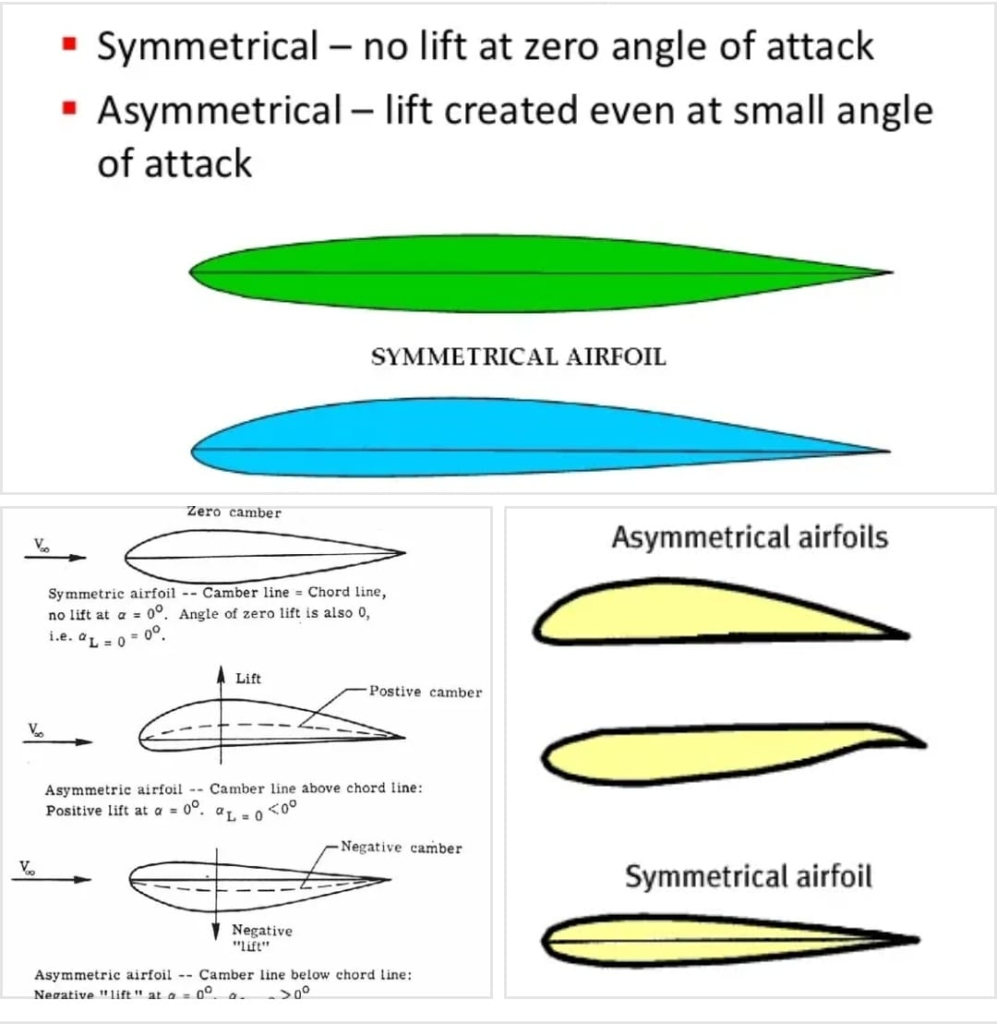
Airfoil shapes can be symmetrical or asymmetrical.
Some airfoils are curved differently on the top side than on the bottom. Those airfoils are asymmetrical, because their two sides are differently shaped. Other airfoils are shaped the same on both sides, so they’re symmetrical.
Symmetrical Aerofoil
The symmetrical airfoil is distinguished by having identical upper and lower surfaces. The mean camber line and chord line are the same on a symmetrical airfoil, and it produces no lift at zero AOA. Most light helicopters incorporate symmetrical airfoils in the main rotor blades.
Asymmetric Aerofoil
Asymmetric airfoils have different positive and negative stall angles, the largest absolute value of the two depends on factors like nose shape and camber. With positive camber (normal and utility aircraft), the negative stall angle can be the largest (in absolute values) but the maximum negative lift available before stall will be smaller than for the positive stall. Larger Reynolds numbers push the stall further away in both directions.
It depends on the airfoil. With symmetric airfoils, the stall angle is the same for positive and negative stalls. Positively cambered airfoils (the sort mostly used) have their negative stall at a smaller absolute value of the lift coefficient compared to their positive stall, but the stall angle can well be at a higher absolute value.
Important Note
An asymmetric airfoil is more efficient at generating lift than a symmetric airfoil.
Given the same flying conditions such as the angle of attack, the same airspeed, the same density of air, both symmetrical wings and asymmetrical wings can produce lift; however, the asymmetrical wing is designed to create more lift and less drag. Symmetrical wings are best used for aerobatic aircraft. Aerobatic aircraft need to generated lift even while spinning and going inverted or upside down.
Both can generate lift. However, in identical conditions (same angle of attack, same airspeed & etc), the asymmetric one can be designed to generate more lift and less drag.
Author – Vander Stone


